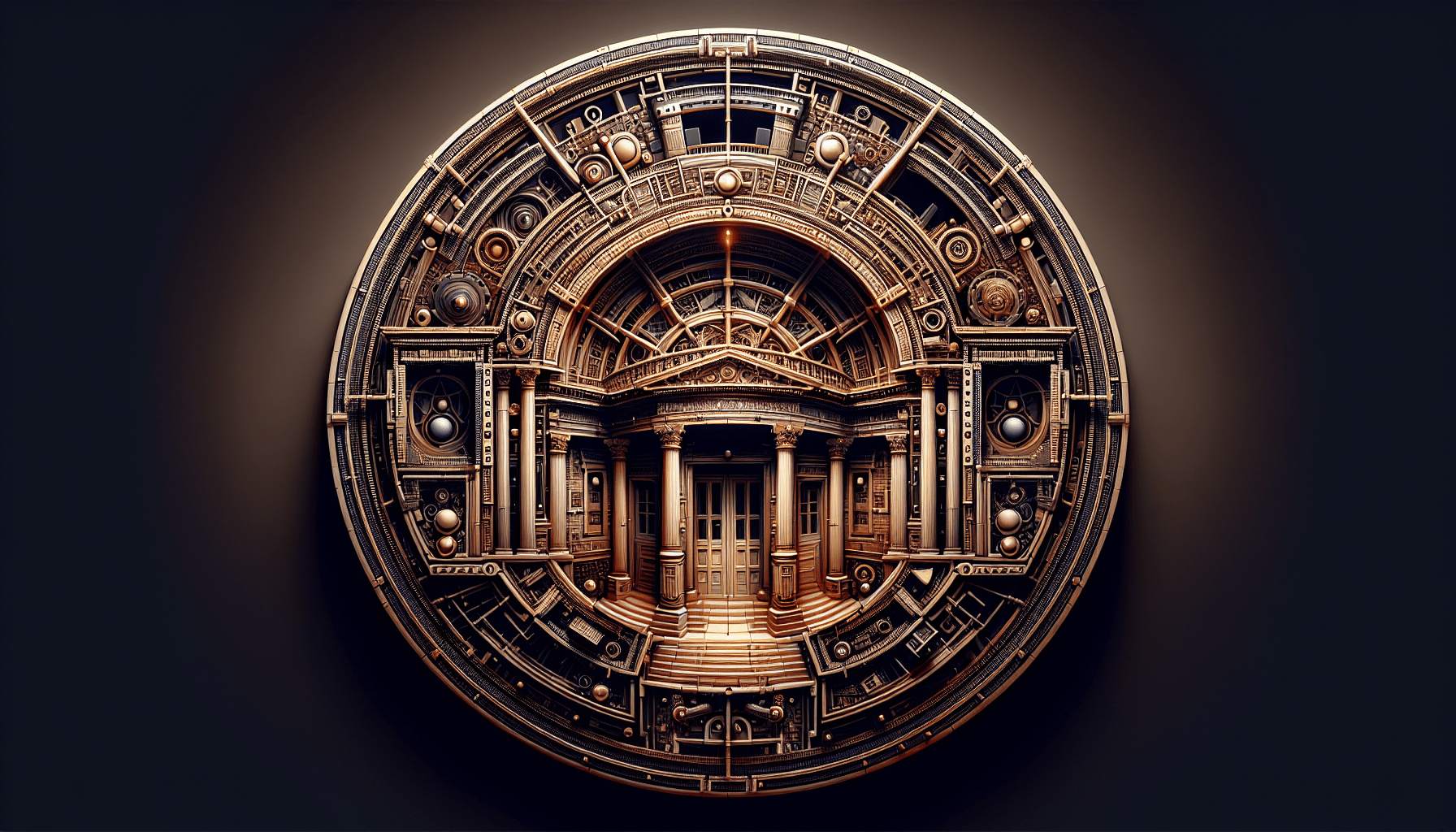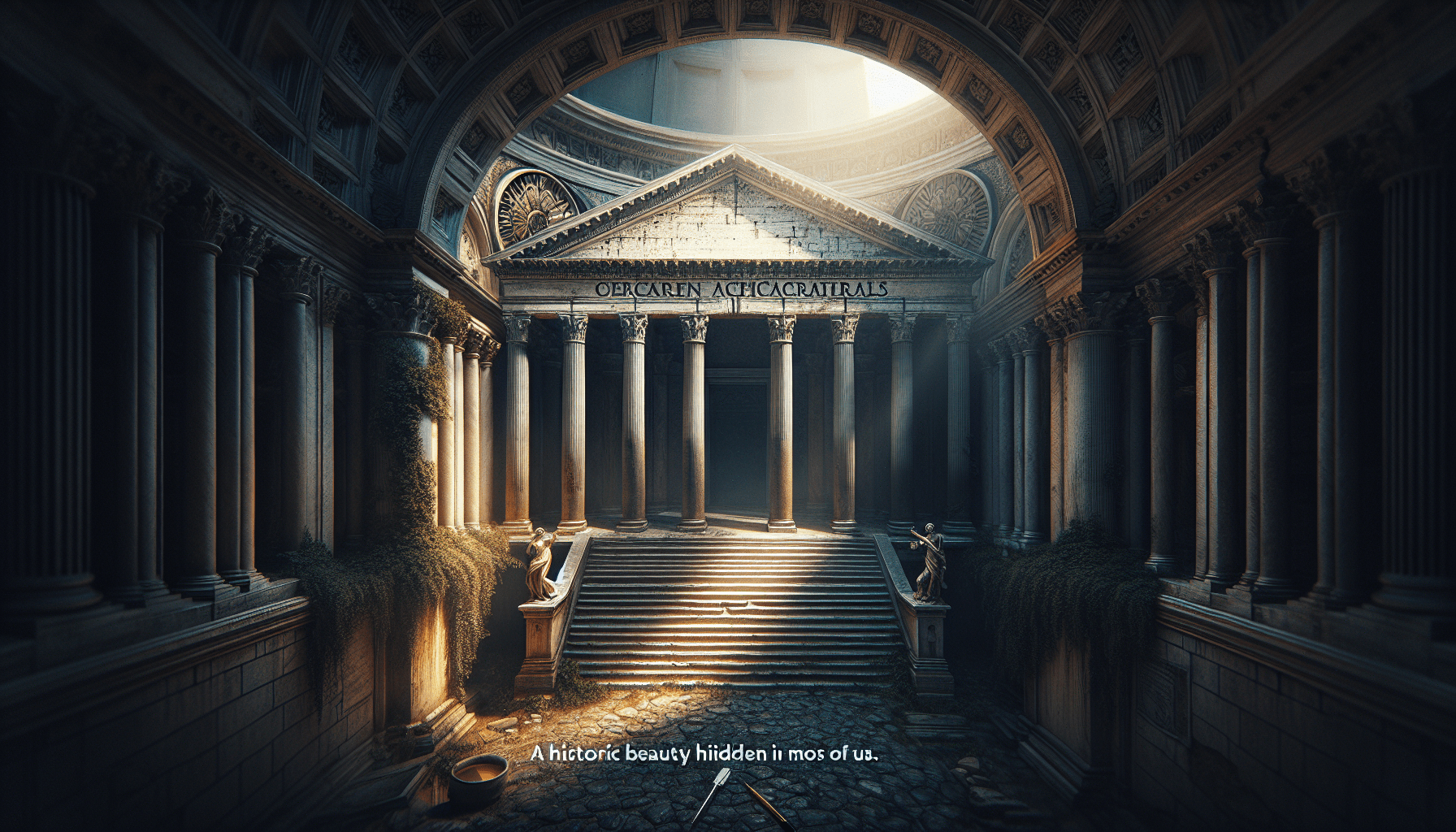Have you ever wondered about the hidden treasures of architecture, the lesser-known gems that often go unnoticed amidst the grandeur of famous landmarks? In a world filled with iconic structures, there exists a realm of architectural marvels that remain hidden, waiting to be discovered. From forgotten historical buildings steeped in tales of the past to hidden gems tucked away in bustling cities, this article takes you on a journey to explore the lesser-known architectural wonders that deserve our attention and admiration. So, grab your imaginations as we embark on a voyage through time and unveil the secrets of these hidden architectural gems. When it comes to historical buildings, we often think of iconic landmarks such as the Colosseum in Rome or the Taj Mahal in India. However, there are many lesser-known architectural gems that deserve recognition. These hidden historical buildings may not be as well-known, but they are just as impressive in their own right. In this article, we will take a closer look at some of these hidden gems from around the world, exploring their historical significance and unique architectural features.

Historical Buildings
Castello di Sammezzano
Located in Tuscany, Italy, the Castello di Sammezzano is a hidden gem that mesmerizes visitors with its stunning Moorish architecture. Built in the 17th century and expanded upon in the 19th century, the castle boasts intricate mosaic tiles, geometric patterns, and ornate designs that showcase the opulence of the Moorish style. Although the castle has fallen into disrepair in recent years, efforts are being made to restore it to its former glory. Exploring the halls and rooms of Castello di Sammezzano feels like stepping back in time and witnessing the grandeur of a bygone era.
Villa Epecuén
Located in Argentina, Villa Epecuén is a hauntingly beautiful ghost town that has become an attraction for curious travelers. The town was established in the early 20th century and thrived as a tourist destination due to its therapeutic saltwater lake. However, in 1985, a dam burst and flooded the town, leaving it submerged for over 20 years. Today, Villa Epecuén has resurfaced, but the buildings are in ruins, creating a haunting atmosphere. The sight of crumbling buildings surrounded by a desolate landscape is both eerie and mesmerizing, making it a must-visit for those who appreciate the beauty in decay.
Hagia Sophia
Hagia Sophia, located in Istanbul, Turkey, is a historical building that has witnessed the rise and fall of empires. Originally built as a Christian church in the 6th century, it was later converted into a mosque during the Ottoman Empire and is now a museum. The architectural marvel of Hagia Sophia lies in its massive dome, intricate mosaics, and grandeur that seamlessly blends elements of Byzantine and Islamic architecture. The building’s rich history and stunning design make it a UNESCO World Heritage site and a testament to the cultural and architectural fusion of different eras.
Now that we have explored some lesser-known historical buildings, let’s shift our focus to the unique architectural wonders found in different regions of the world.

Architecture of India
Khajuraho Group of Monuments
The Khajuraho Group of Monuments, located in Madhya Pradesh, India, is a collection of stunning temples built between the 10th and 12th centuries. These temples are famous for their intricate carvings, depicting various aspects of life, including gods, goddesses, dancers, and mythical creatures. The intricate sculptures and breathtaking beauty of the Khajuraho temples have earned them a place on the UNESCO World Heritage list, attracting tourists and architecture enthusiasts from around the world.
Lepakshi Temple
Located in Andhra Pradesh, India, the Lepakshi Temple is known for its intricate architecture and awe-inspiring sculptures. Built in the 16th century, the temple is dedicated to Lord Shiva, Vishnu, and Veerabhadra. What sets Lepakshi Temple apart is the presence of a hanging pillar, which is said to defy gravity. The temple’s exquisitely carved pillars, ceilings, and frescoes showcase the artistic mastery of the Vijayanagara Empire and make it a must-visit for anyone interested in ancient Indian architecture.
Hawa Mahal
Situated in Jaipur, Rajasthan, Hawa Mahal, also known as the “Palace of Winds,” is a symbol of architectural brilliance. Built in 1799, the palace features a unique five-story façade with intricate latticework windows designed to allow cool air to flow through, hence the name. The palace’s honeycomb-like structure, adorned with ornate carvings and vibrant colors, reflects the rich cultural heritage of Rajasthan. Hawa Mahal stands as a testament to the ingenuity of Rajput architecture, offering a glimpse into the royal past of the region.
Moving on to Eastern Europe, we encounter a different flavor of architectural marvels.

Eastern European Architectural Marvels
Buzludzha Monument
Nestled in the Bulgarian mountains, the Buzludzha Monument is a striking example of communist architecture. Built in the 1980s as a tribute to the Bulgarian Communist Party, the monument’s futuristic design stands in stark contrast to the surrounding landscape. The massive concrete structure, topped with a red star, houses a large meeting hall adorned with murals depicting scenes from Bulgaria’s socialist history. Although the monument has fallen into disrepair and is closed to the public, it remains an intriguing relic of the country’s communist past.
Rundāle Palace
Located in Latvia, Rundāle Palace is a magnificent Baroque and Rococo-style palace that exudes elegance and grandeur. Built in the 18th century, the palace boasts exquisite interiors, including lavishly decorated rooms, opulent chandeliers, and beautifully landscaped gardens. Each room showcases a different architectural style, reflecting the influences of renowned Italian and Russian architects of the time. Today, Rundāle Palace is open to the public, allowing visitors to experience the opulence of a bygone era.
Žižkov Television Tower
Rising above the Prague skyline, the Žižkov Television Tower is a unique architectural landmark that divides opinions. Completed in 1992, the tower stands at a height of 216 meters and features crawling baby sculptures by artist David Černý climbing its exterior. These thought-provoking sculptures add a touch of whimsy to the otherwise stark tower. Despite being initially controversial, the tower has become a beloved symbol of Prague, attracting both locals and tourists who appreciate its unconventional design and panoramic views of the city.
Now let’s delve into the world of unconventional designs that challenge the norms of architecture.

Unconventional Designs
Casa Batlló
Located in Barcelona, Spain, Casa Batlló is an architectural masterpiece designed by the renowned architect Antoni Gaudí. The building’s undulating façade, colorful ceramic tiles, and organic shapes make it a testament to Gaudí’s unique style of Catalan Modernism. The interior of Casa Batlló is just as captivating, with its intricate details, arched ceilings, and imaginative use of light and space. A visit to this unconventional residence offers a glimpse into Gaudí’s creative genius and his ability to transform ordinary buildings into extraordinary works of art.
La Muralla Roja
Situated in Calpe, Spain, La Muralla Roja, or “The Red Wall,” is a striking residential complex that blurs the lines between architecture and sculpture. Designed by architect Ricardo Bofill in the 1970s, this labyrinthine structure features vibrant red and blue walls, angular forms, and a complex network of staircases and courtyards. The exterior design, inspired by the Mediterranean tradition of the kasbah, creates an otherworldly ambiance that invites exploration and visual delight.
Lotus Temple
Located in New Delhi, India, the Lotus Temple is a modern architectural marvel and a symbol of unity. Designed in the shape of a lotus flower, the temple welcomes people of all religions and emphasizes the importance of harmony and peace. The white-marble structure, with its pristine petals, appears to float above its surrounding pools, creating a serene and tranquil atmosphere. The Lotus Temple’s minimalist design and emphasis on interfaith dialogue make it an architectural wonder that transcends borders and beliefs.
Finally, let’s uncover some hidden discoveries that offer a unique glimpse into the past.

Offbeat Discoveries
Welbeck Abbey
Tucked away in the English countryside, Welbeck Abbey is a hidden gem that boasts a rich history dating back to the 12th century. Once home to the Dukes of Portland, the abbey is now a school and a center for the arts. Visitors can explore the magnificent interiors, including the stunning 18th-century State Rooms and the underground tunnels that were once used as wine cellars and storage areas. The preservation of Welbeck Abbey’s heritage makes it a captivating destination for history enthusiasts and architecture lovers alike.
Knap of Howar
Located in the Orkney Islands of Scotland, the Knap of Howar is one of the oldest standing stone structures in Northern Europe. Dating back to around 3700 BC, this Neolithic farmstead provides a fascinating insight into the lives of our ancient ancestors. The two interconnected stone houses that make up the Knap of Howar feature low, narrow doorways and stone-built walls that have withstood the test of time. Visiting this ancient site allows you to step back thousands of years and appreciate the remarkable architectural skills of our ancestors.
Predjama Castle
Perched atop a 123-meter-high cliff in Slovenia, Predjama Castle is an architectural marvel that blends seamlessly into its natural surroundings. Built in the 13th century, the castle was strategically constructed within a cave, creating a unique defensive position. The castle’s dramatic location and its connection to the legendary knight Erazem Lueger make it a captivating destination for history buffs and architecture enthusiasts. Exploring the castle’s chambers, secret tunnels, and hidden passages allows you to immerse yourself in a world of medieval intrigue and architectural ingenuity.
In conclusion, the world is filled with hidden historical buildings and architectural wonders waiting to be discovered. From the opulence of Castello di Sammezzano to the unconventional designs of Casa Batlló, these lesser-known gems offer a glimpse into the creativity and craftsmanship of the past. Whether you’re exploring the historical significance of Hagia Sophia or marveling at the intricate carvings of the Khajuraho Group of Monuments, these hidden architectural gems are sure to leave a lasting impression. So, go ahead and embark on a journey of exploration and discovery, and uncover these hidden treasures that reveal the beauty and diversity of the world’s architectural heritage.
